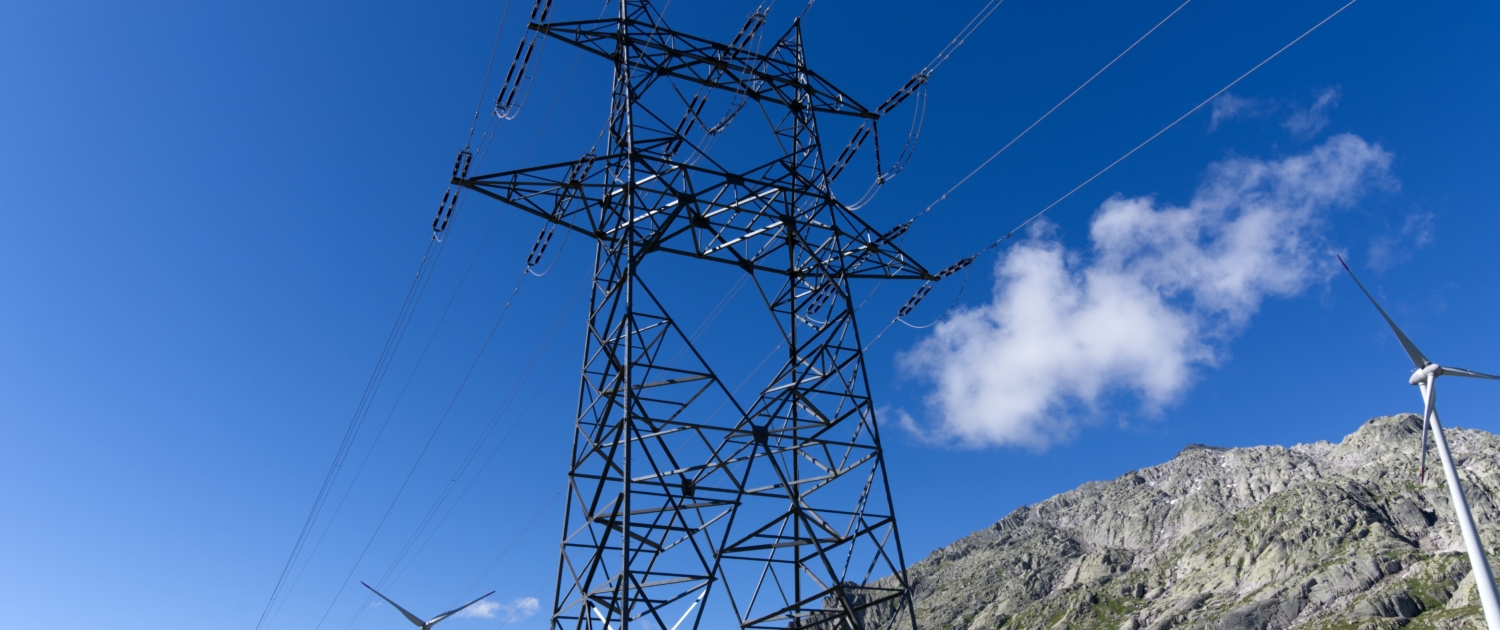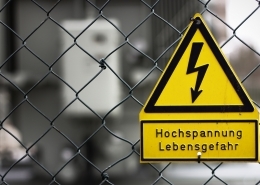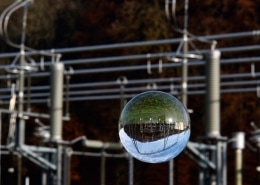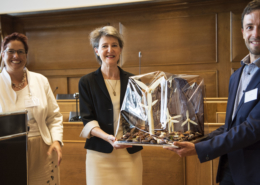Scenario framework 2030/2040: The power grid of the future is based on this
What does the Swiss power grid need to look like to meet the challenges of the future? Keywords: Grid stability, expansion of photovoltaics and wind power, electricity import and export. In the so-called energy scenario framework, the Federal Council defines the key points for electricity grid planning.
According to the Energy Perspectives 2050+, conventional electricity consumption will indeed be reduced - thanks to various efficiency measures. Reasons include: Appliances coming onto the market are consuming less and less electricity, and companies are taking measures to reduce their electricity consumption. On the other hand, new electricity consumers are being added. Electromobility and heat pumps are the main drivers of electrification and are causing an overall increase in electricity consumption.
The power grid of the future should be prepared for this. The "Scenario Framework 2030/2040 for Electricity Grid Planning" is about creating planning certainty for the energy industry. Martin Michel and Fabio Rui, grid specialists at the Swiss Federal Office of Energy, explain its significance for Switzerland's electricity supply.
Energeiaplus: Scenario framework 2030/2040 for electricity grid planning. That sounds a bit technical. How would you explain in simple terms what it's all about exactly?
Martin Michel: The scenario framework provides energy industry fundamentals for electricity grid planning. The fundamentals take into account, for example, how electricity consumption will develop or the expansion of renewable energies if nuclear power plants are decommissioned at the same time. The fundamentals are based on the Energy Perspectives 2050+.
Why do we need these fundamentals?
Martin Michel: Until now, there were no common binding guidelines for planning the electricity grids. The individual grid operators determined where expansion or strengthening of the grid was necessary. There was no nationwide approach. There was often criticism that the grid operators were planning an unnecessarily large number of power lines. The scenario framework and the other provisions of the Federal Act on the Conversion and Expansion of Electricity Networks ("Electricity Networks Strategy") change this.
Were there cases in the past where the scenario framework would have been useful?
Martin Michel: Yes, the instrument of the scenario framework already proved its worth when Swissgrid drew up its "Strategic Grid 2025". In this process, Swissgrid evaluated the expansion requirements in the transmission grid throughout Switzerland with the help of a scenario framework. Various planned projects (e.g. the voltage increase from 132-kV to 220-kV of the Watttenwil - Mühleberg line) have proven to be unnecessary.
For whom are these basics relevant?
Fabio Rui: For the national grid company Swissgrid and the large electricity grid operators of the supraregional distribution grid. With their grids, they ensure that the electricity comes from the large producers and from abroad to the consumers, and on the other hand that the Swiss power plants are closely connected to Europe in terms of grid technology. The scenario framework is the basis for Swissgrid and the major grid operators to calculate what the requirements are for the future. Using so-called load flow calculations (how much electricity needs to be transported and when), they can identify where reinforcements or even new power lines are needed. One of the merits of the scenario framework is also that the various players are sitting around the same table. This means that power grid planning is better coordinated and has a solid foundation.
The scenario framework is approved by the Federal Council and is binding for authorities on electricity grid issues. What does that mean in concrete terms?
Martin Michel: This is particularly relevant for the Federal Electricity Commission (ElCom). The remit of the independent state regulatory authority in the electricity sector also includes reviewing Swissgrid's network planning. If ElCom assesses the need for the projects positively in its review, Swissgrid is assured that the project costs can be offset against the network usage charge and that Swissgrid will not be left sitting on the costs. This creates planning and legal certainty for all parties involved.
We do not yet know exactly what the challenges will be in 2030 and 2040. The scenario framework is therefore based on three scenarios. What do you take into account there?
Fabio Rui: As already mentioned, the three scenarios of the scenario framework are based on the Energy Perspectives 2050+. The lead scenario is to be prioritized in the power supply. It is characterized by a strong electrification of the energy system and a rapid expansion of domestic renewable electricity production. The other two scenarios are considered "fringe" scenarios. One foresees a stronger increase in electricity consumption combined with a delayed expansion of domestic production. In the other scenario, biogas and synthetic gases assume a more important role, and the expansion of photovoltaics advances more rapidly.
Whether the situation develops as described in the scenarios depends on many factors. Additions, permits, etc. At the same time, the robustness of the grid must be guaranteed. How does this work?
Martin Michel: The scenario framework is not about predicting the future exactly. Rather, the scenario framework shows how the drivers of electricity grid development (including consumption and production or the development of the energy industry in Europe) could develop. Therefore, the scenario framework contains three different scenarios to ensure a certain robustness of the planning of the power grids.
The looming energy crisis shows how quickly the situation can change. Has this been taken into account?
Martin Michel: In addition to the three scenarios, the scenario framework instructs grid operators to check their grid planning for possible risks. These risks do not represent a separate scenario for the design of the electricity grids, but they can have a negative impact on the system operation of the electricity grids, on Switzerland's import possibilities and on the national economy. If the review results in extended requirements for the electricity grids, the grid operators must take these into account in their multi-year plans.
Where do we go from here?
Fabio Rui: The network operators now have time to update their network planning and draw up multi-year plans. These will then include possible line projects. Next year, Swissgrid must submit the multi-year plan to ElCom for review. If ElCom gives its approval, the project planning will then be fleshed out and the approval process will be initiated.
Swissgrid put the Chamoson-Chippis extra-high voltage line into operation in the summer. The procedure took over 30 years. Among other things, it was disputed that the line was necessary at all. Will the scenario framework shorten such procedures?
Martin Michel: That is clearly the goal. At the very least, future approval procedures will be relieved of the question of need with the preliminary needs assessment and review based on the scenario framework. This is an important "piece of the puzzle" for optimizing the framework conditions. Further measures are included in the "Electricity Networks Strategy" such as the optimization of the approval procedures for line projects, the criteria and specifications for the decision-making process "cable or overhead line" and the improvement of the acceptance and transparency of line projects.
Interview: Brigitte Mader, Communications, Swiss Federal Office of Energy
 shutterstock
shutterstock
 5 Vote(s), Durchschnitt: 4,20
5 Vote(s), Durchschnitt: 4,20 ETH-Tag im Zeichen der Energie
ETH-Tag im Zeichen der Energie  FotoliaElektrische Spannung im Mass
FotoliaElektrische Spannung im Mass  Verband Schweizerischer Elektrizitätsunternehmen (VSE)Forschungstagung – «Neues aus der Energieforschung»
Verband Schweizerischer Elektrizitätsunternehmen (VSE)Forschungstagung – «Neues aus der Energieforschung»  ©Image : P. Bosshard «Die Windenergie ist eine reife und saubere Technologie»
©Image : P. Bosshard «Die Windenergie ist eine reife und saubere Technologie» 
 BFE/Brigitte Mader - Treppenhaus in Glasgow, Schottland
BFE/Brigitte Mader - Treppenhaus in Glasgow, Schottland Shutterstock
Shutterstock
Neuste Kommentare